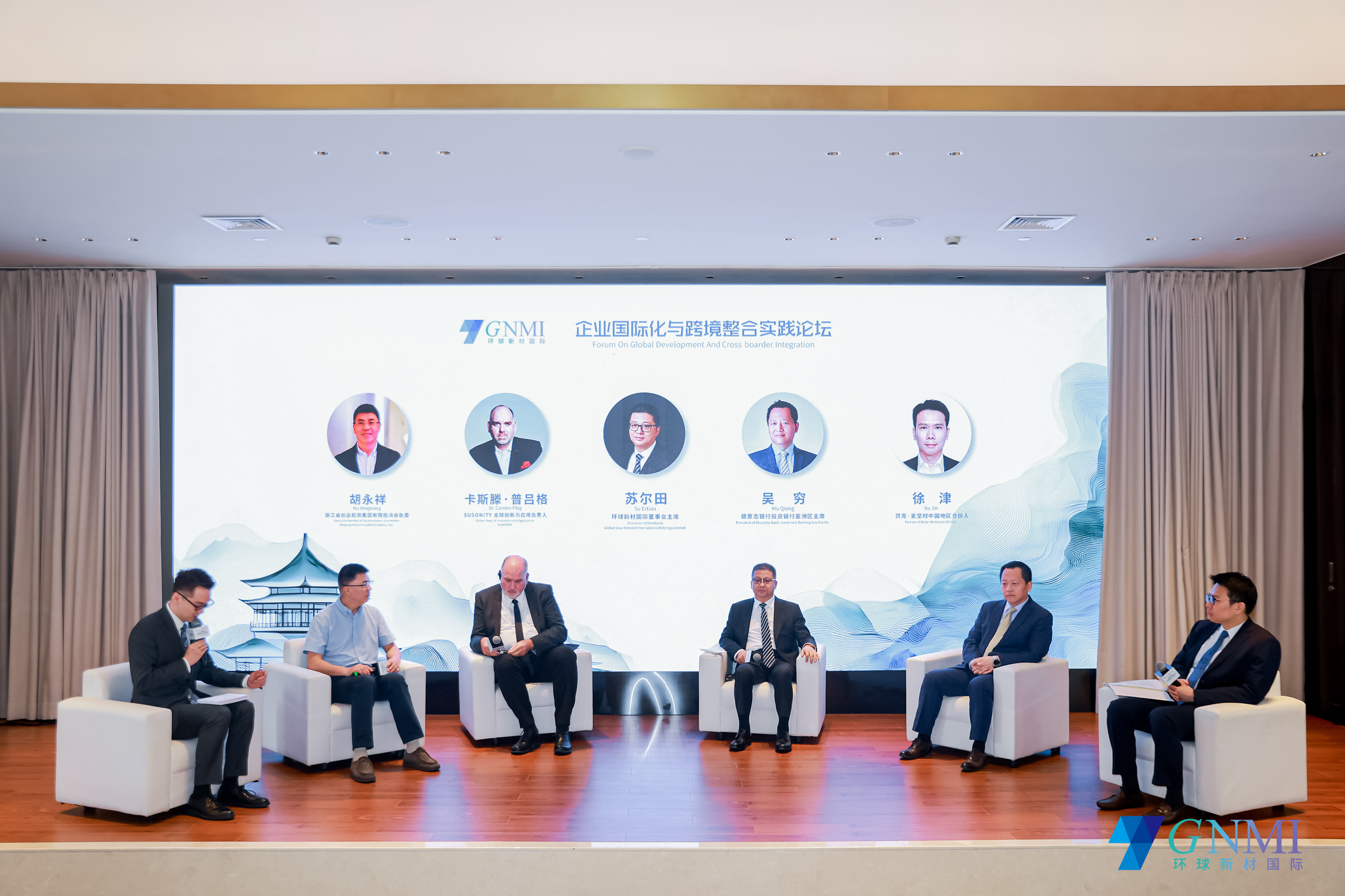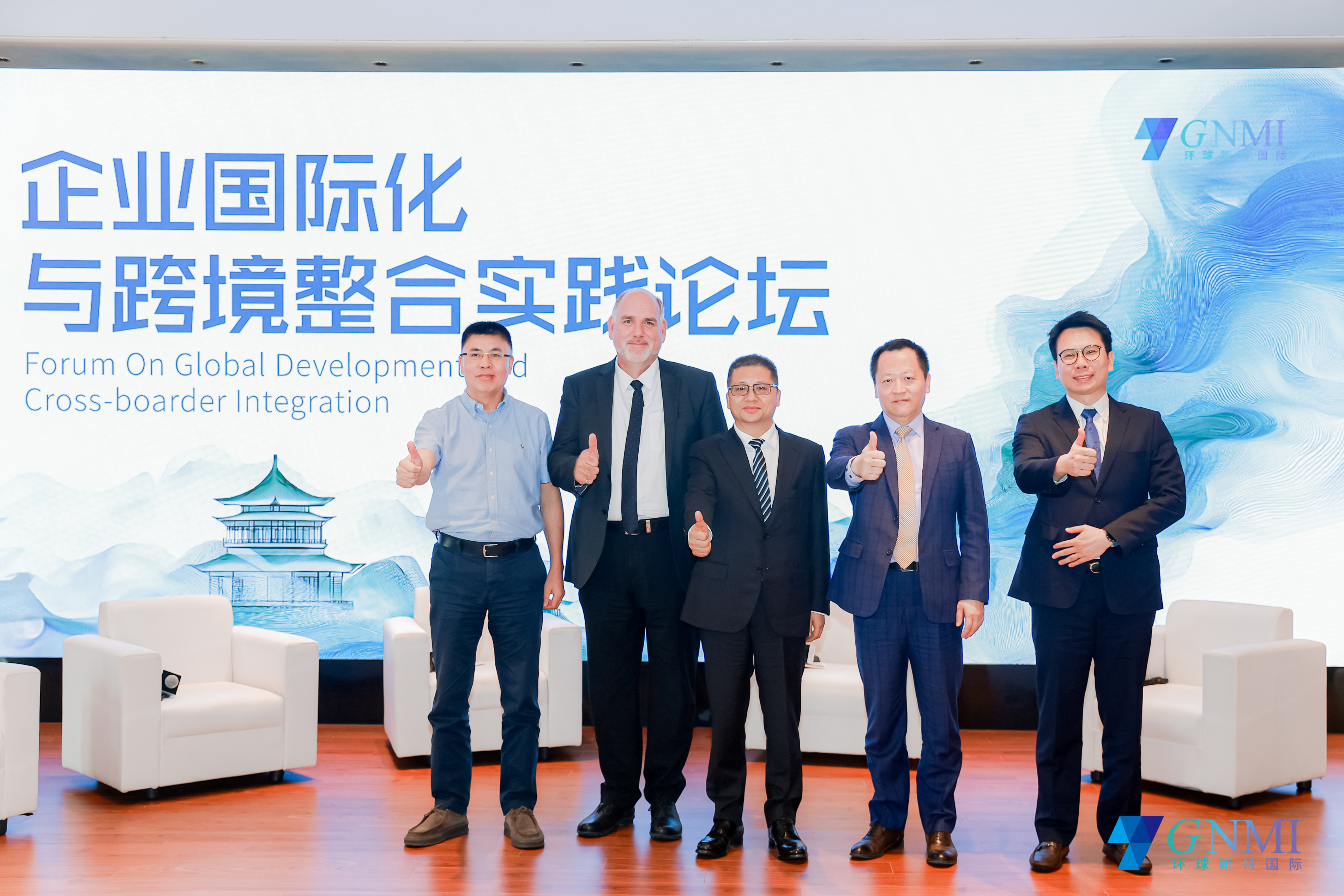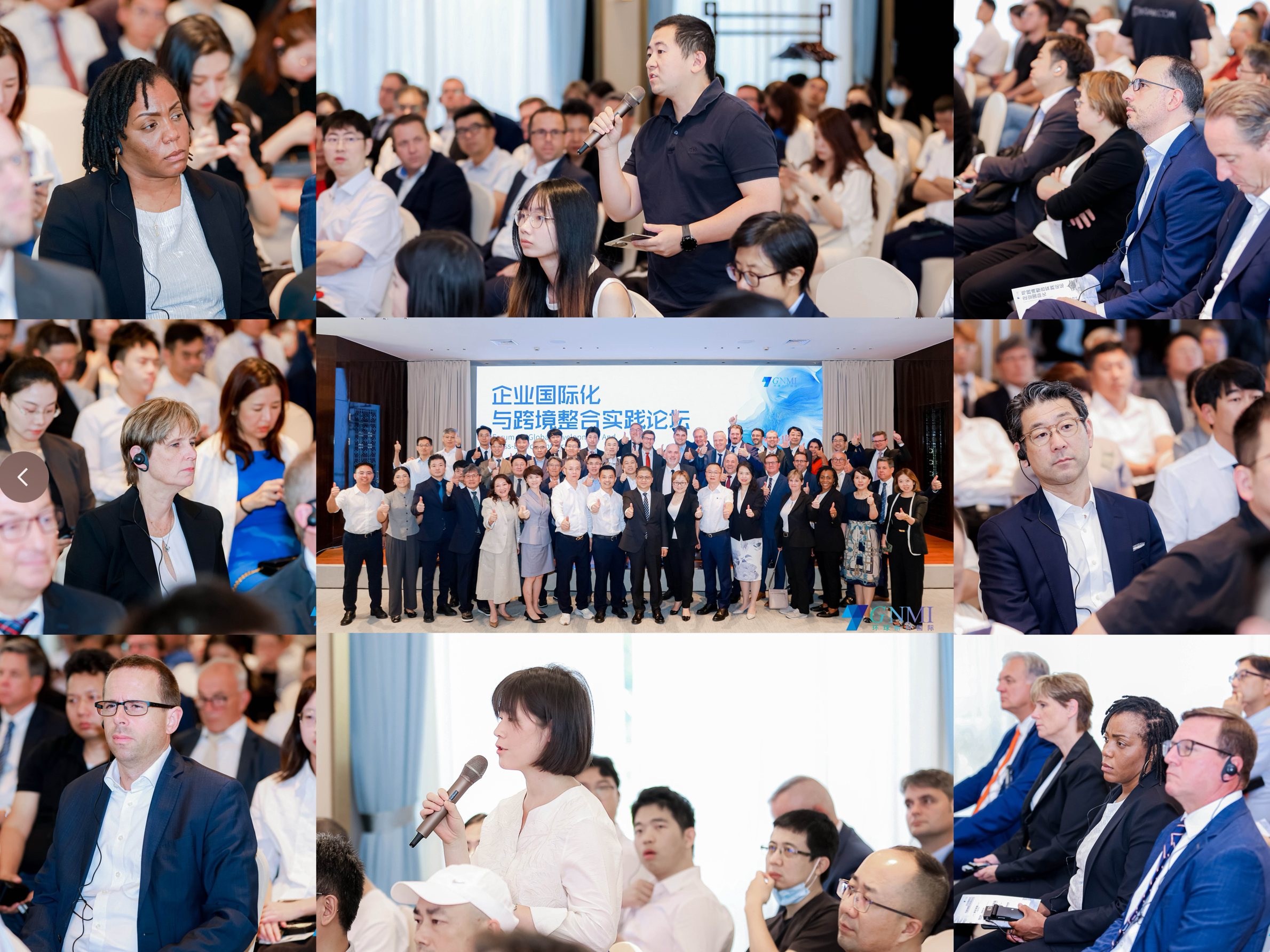In Hangzhou, a high-level dialogue on enterprise internationalization and cross-border integration was successfully held.
Recently,”Enterprise Internationalization and Cross-border Integration Practice Forum” hosted by Global New Material International was successfully held, attracting business leaders, investment, financial and legal experts from around the world to gather together to discuss how Chinese enterprises can achieve the leap from “going global” to “going upgraded” through technology mergers and acquisitions and global integration.
Those present at the forum were Su Ertian, Chairman and Chief Executive Officer of Global New Material International, Wu Qiong, Chairman of Deutsche Bank Asia, Hu Yongxiang, Executive Committee Member of Zhejiang Venture Capital Group, Xu Jin, Partner of Baker McKenzie, and Carsten Plueg, Head of Global Innovation at SUSONITY Germany.

01
Strategic Layout:
Mergers and acquisitions open up channels for Chinese enterprises to upgrade themselves
Hu Yongxiang, a Member of the Executive Committee of Zhejiang Venture Capital Group, pointed out that Chinese enterprises’ internationalization has gone through “three stages” :
• Going global: Opening up overseas markets with high-quality and cost-effective products;
• Going integrated: Deeply rooted overseas through both technological innovation and mergers and acquisitions;
• Going upgraded: Take control of industry discourse and promote standard co-creation.
Taking Global New Material International as an example, Hu emphasized the dual-engine role of “R&D innovation + cross-border mergers and acquisitions”:
From the acquisition of South Korea’s CQV in 2023 to the acquisition of German Merck’s global surface solutions business in 2024, GNMI not only gained technology and channels, but also opened the door to the global high-end market.
02
From the Perspective of Capital:
Accurate in Judgment, Good Management, and Financing Advantages
Wu Qiong, Chairman of Deutsche Bank Asia,made remarks:
The core logic of a successful merger and acquisition is “the assets are more valuable in the hands of the new buyer than in the hands of the original owner.”
He summed up three key elements:
1. Accurate in judgment: accurately grasp industry cycles and trends;
2. Good Management: Improve operational efficiency and reduce costs;
3. Financing advantage: Access to lower-cost financial support.
Wu Qiong emphasized that mergers and acquisitions in China are no longer confined to energy resources, but rather focus more on the combination of the production and sales. In several industries, Chinese enterprises’ technological levels are no less advanced than or even ahead of their international counterparts.
03
Compliance and Culture:
Challenges that globalization cannot avoid
“When communicating with regulatory body, you need to answer two questions: Who are you?” “What are you going to do?”pointed out by Xu Jin, a partner at Baker McKenzie.
He believes that Global New Material International’s clear and transparent communication during the merger and acquisition process made the deal seem like a reasonable business act rather than a potential risk.
Carsten Plueg, Global Head of Innovation at SUSONITY in Germany, added: “The Germans strive for perfection, while the Chinese are more focused on trial first and improvement later. But as long as the goals are the same, cultural differences can be overcome.”
04
Practical Experience:
Mergers and acquisitions are just the beginning; Integration is the key
Su Ertian, Chairman and Chief Executive Officer of Global New Material International, emphasizes that:
• The completion of the merger and acquisition is just the beginning; the real challenge lies in integration;
• The key to successful integration is to respect the culture, understand the needs, and integrate key elements;
• Multi-regional production sites realize supply chain localization to address geopolitical risks;
• Multi-currency income naturally creates currency hedging;
• The layout of factories in Europe and Americas effectively circumvents trade barriers.
Hu Yongxiang added that the merger and acquisition is a full integration of technology, market, supply chain and team, and will unleash huge potentials in emerging fields such as photovoltaic and lithium batteries.
05
Future expectations:
New opportunities for Chinese enterprises to go global
Su Ertian said,when talking about the future, “Global New Material International will build an ecological technology platform through new materials + innovation + all-scenario application. In the next five to ten years, we will make us as respected as Merck.”
Su believes that if Chinese enterprises does go global, they need three capabilities:
• The ability of restructuring the global organization;
• A deep understanding of global practice;
• Execution to solve complex problems.
Wu Qiong predicts that in the next 5 to 10 years, China will see more globalized international enterprises emerge, and the Belt and Road Initiative regions such as Southeast Asia, the Middle East and Latin America will become key points.


Quotes
• Hu Yongxiang: “Wanna be a witness to see the day dreams come true.”
• Carsten Plueg: “It requires a deep understanding of market demand and quick adaptation.”
• Xu Jin: “Though tortuous, the future is promising.”
• Wu Qiong: “In the near future, we will witness more globalized international companies root in China.”
• Su Ertian: “Going global requires not only bravery and astuteness, but also boldness and cautiousness.”
The forum reached a consensus that Chinese enterprises’ internationalization is moving from “going global” to “going upgraded”.
Chinese enterprises are accelerating the building of sustainable global competitiveness by acquiring advanced technologies, brand channels and talent teams through technology mergers and acquisitions, and releasing synergy through global integration.
Global New Material International will continue to use innovation and mergers and acquisitions as its dual engines, working with global partners to create a new chapter of international development!


